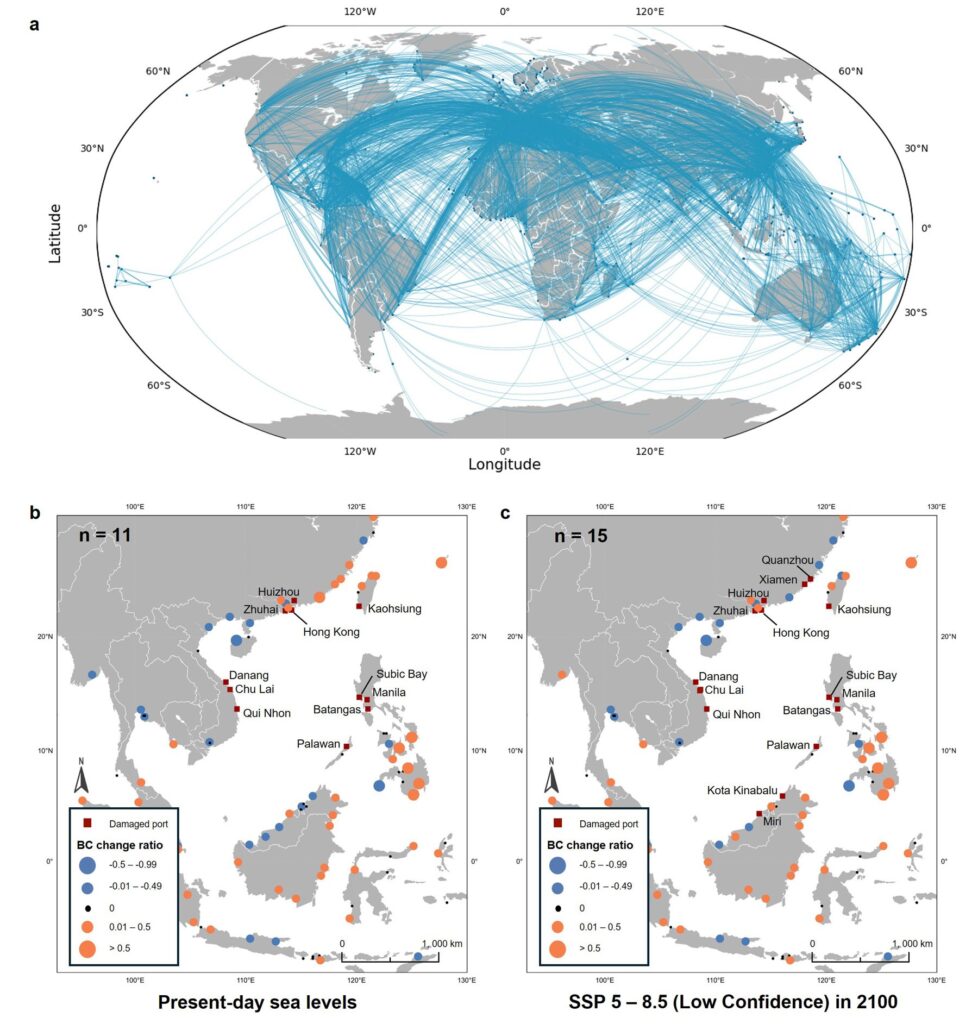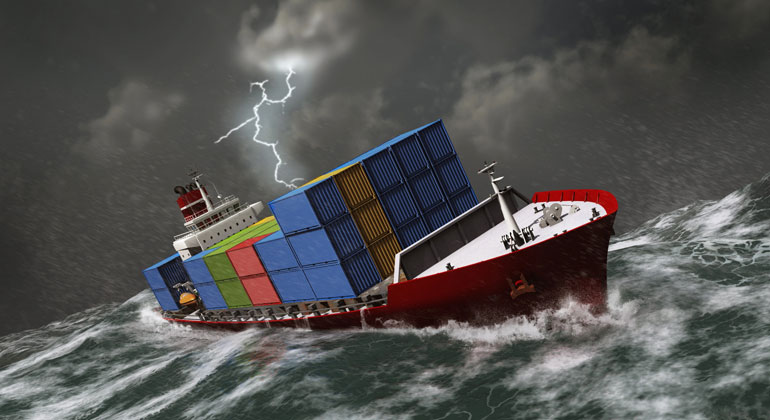The Great Ripple – How a Tsunami Can Disrupt Global Trade
Port disruptions are costly, very costly. While the 2011 Tohoku tsunami caused around $12 billion in damages to port facilities and vessels, the ensuing port disruptions resulted in a loss in seaborne trade that cost approximately $3.4 billion per day.
Shipping facilitates more than 80% of global trade, meaning disruptions to the global port network can have severe consequences for global commerce. Despite these risks, tsunamis are rarely considered in port capital planning or structural design. This oversight is partly due to the infrequent occurrence of tsunamis and the lack of robust methods to quantify potential risks.
In response, a group of researchers has proposed a framework to evaluate tsunami risk to seaports and the global port network. The framework estimates potential economic losses in trade caused by port disruptions while also analyzing the ripple effect it would have on the global port network, including the ramifications for shipping routes and ports not directly affected by physical damage.
Constance Chua, a postdoctoral researcher at Tohoku University’s International Research Institute of Disaster Science (IRIDeS), led the study, with the support of Professor Fumihiko Imamura, Associate Professor Anawat Suppasri, and Professor Adam Switzer from Nanyang Technological University.
“We applied our framework to the South China Sea, focusing on a potential tsunami scenario triggered by a rupture along the Manila Trench,” says Chua. “We also incorporated tsunami conditions under future sea level rises.”
In total, Chua and her colleagues evaluated 104 scenarios, thanks to the help of international experts from various fields. These included Dr. Tanghua Li, a geophysicist at the Earth Observatory of Singapore who specializes in sea-level rise modeling in Asia; Research Professor Qiang Qiu, a tectonic geodesy expert on the Manila Trench based at the Chinese Academy of Sciences; and Professor Linlin Li, a renowned tsunami modeling expert from Sun Yat-sen University. Each expert contributed the latest knowledge and models on different hazard components, ensuring a broad base of factors was considered, thereby creating scenarios that mirrored reality as closely as possible.

The study found that a Manila Trench tsunami could damage up to 11 international seaports under present-day sea-level conditions and up to 15 ports by 2100. In the most severely damaged locations, port closures could last over 200 days.
However, the length of closure did not always translate into the greatest economic loss. Ports with higher annual cargo were more susceptible to economic damage. The ports of Hong Kong, Manila, and Kaohsiung experienced the highest trade losses across all scenarios.
Chua says that a Manila Trench tsunami could have greater repercussions for global trade than past events, such as the 2004 Indian Ocean tsunami and the costly 2011 Tohoku tsunami. “Since South China hosts some of the busiest ports and sea lanes, the number of disrupted shipping routes would far exceed previous tsunami events. Given the lack of consideration given to tsunami impacts, our study could help stakeholders prepare for such events.”
- Title: „An approach to assessing tsunami risk to the global port network under rising sea levels“ | Journal: npj Natural Hazards | DOI: 10.1038/s44304-024-00039-2








